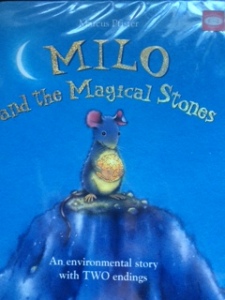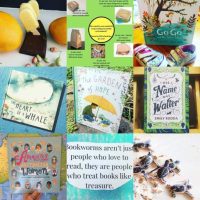Symbiosis
A strange word I used to associate only with the rainforest – strangler figs, leaf cutter ants and fungus and many plants and butterflies. All of these works in different symbiotic ways – negative and positive. Which is very similar to the way humans and the planet work together.
As the population of the planet increases and we all want more, we are working against the planet by not giving it enough time to grow and survive.
Milo and the magical stones by Marcus Pfister is a beautifully written story that allows the reader to decide how they think the mice should treat the island that they live on. A mice named Milo finds a magical stone and then discovers there are many more. He is told by the wise mouse, Balthazar that if they are going to all take a stone each that they must give something back to the island. The reader can then choose to pursue the ‘Happy ending’ or the ‘Sad ending’ to see how symbiotic relationships can blossom or fail.
By allowing children to choose which path they take allows them to think about the path they would take and also see the outcome of the opposing path.
There are many actions in our daily lives where we can choose to make a difference to the planet we live on.
This books provides a simple start for children (and adults) to start to become more conscious of the actions they take on a daily basis.
Teaching tips
- Ask students to write down different activities they do each day and then with a partner work out how this action could be more environmentally friendly.
- Write a letter to their parents outlining how they can make small changes to work in a positive way towards the environment.
- Compare this story to a real life current situation (coal mining and land degradation, tree logging and soil degradation, large scale deep sea fishing and loss of habitats and species, land clearing for farming or housing and lack of green space). Use a Venn diagram to make the comparison easier. Use current newspaper articles, images and videos for younger students.

NSW Curriculum links:
Geography
Stage 1: Features of places.
Stage 2: The Earth’s environment
Stage 3: A diverse and connected world.
Science
Stage 1: Earth and space, Living world

